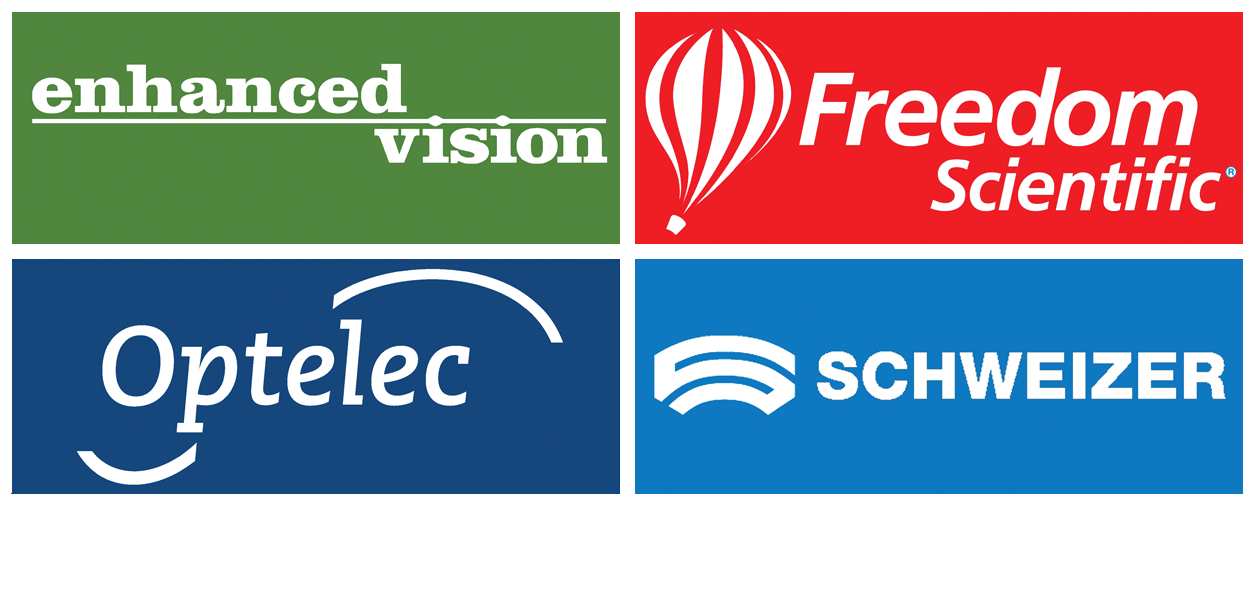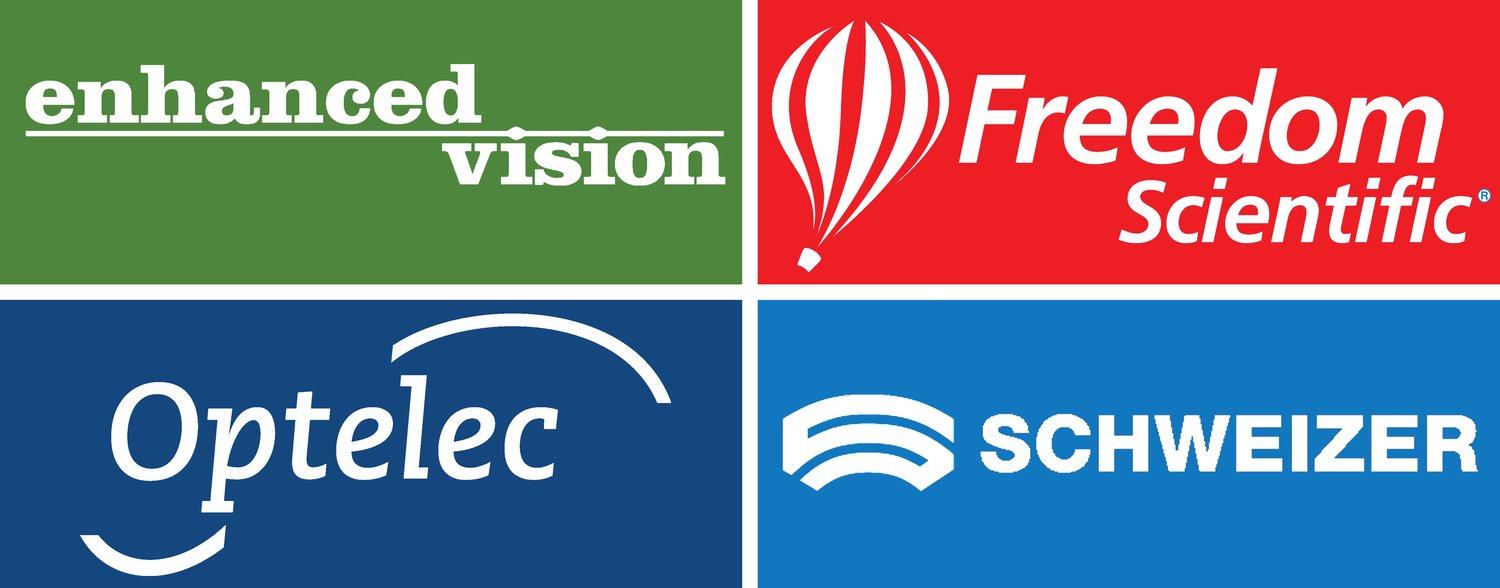Types of Low Vision Aids for the Visually Impaired
Low Vision Aids
Imagine looking through a blurry lens. Frustrating, isn't it? This is a snippet of what those with low vision experience. As we traverse this article, you'll learn how specialized aids can sharpen that blurry image, offering clarity and independence.
Defining Low Vision
Low vision isn’t complete blindness but a condition where standard glasses, contact lenses, or even surgery can't correct one's vision. Age-related diseases, injuries, and genetics can all play a role.
Low Vision vs. Poor Eyesight: The Difference
While it might sound similar to having poor eyesight, low vision is a distinct and more severe visual impairment. Poor eyesight might be rectified or considerably improved with corrective lenses, surgery, or medication. However, low vision is a reduced level of vision that cannot be fully corrected with conventional treatments. Those with low vision retain some sight, but even with corrective measures, their vision doesn’t return to normal.
The Underlying Causes
Low vision is not a standalone ailment but a result of various conditions and diseases. Here are some primary contributors:
Age-Related Macular Degeneration (AMD): A leading cause in older adults, AMD damages the middle part of vision but spares peripheral vision.
Glaucoma: Often termed the “silent thief of sight”, it damages the optic nerve, leading to vision loss and, if untreated, blindness.
Diabetic Retinopathy: A consequence of diabetes, this condition affects blood vessels in the retina, leading to vision disturbances.
Inherited Diseases: Conditions like retinitis pigmentosa can lead to low vision, and they often manifest early in life.
Accidents or Injuries: Trauma to the eyes can result in vision challenges, adding to the list of low vision causes.
Assessing the Degree
Low vision varies in severity. Some may have blind spots, reduced central vision, or lack peripheral vision. Others might struggle with blurred vision, akin to looking through an unfocused camera. It's essential to understand that the spectrum of low vision is vast, with each person's experience being unique.
The Emotional Dimension
Beyond the physical, low vision carries an emotional weight. It can be a journey of frustration, adapting to a world that often isn’t designed for visual impairment. Yet, with support, tools, and a resilient spirit, many individuals with low vision lead fulfilling, independent lives.
The Significance of Low Vision Aids
For many, these aids aren’t just tools but bridges to a world full of colours, shapes, and experiences. They amplify the available vision, ensuring the user can read, recognize loved ones, and perform daily tasks with relative ease.
1. More Than Just Tools - They're Freedom
Low vision aids aren't merely devices; they symbolize independence. Whether it’s reading a cherished book, recognizing the face of a loved one, or safely crossing a bustling street, these aids empower individuals to engage in daily activities without being tethered by their visual limitations.
2. Embracing Technology
In today's digital era, technology is revolutionizing the world of low-vision aids. From apps that narrate the world to specialized CCTVs that magnify text, technological advances have been nothing short of a godsend. The beauty lies in how these aids are evolving to be more user-friendly, portable, and adaptable to various needs.
3. Nurturing Self-confidence
Think about the first time you rode a bicycle without training wheels or cooked a meal from scratch. The sense of accomplishment is unparalleled. Similarly, low vision aids instil confidence. They allow individuals to trust in their abilities and not be defined by their visual impairments.
4. Breaking Social Barriers
Ever felt left out of a conversation because you hadn’t seen the latest viral video or meme? Now, imagine missing out because you couldn't perceive visual cues, facial expressions, or text messages. Low vision aids play a pivotal role in enhancing social interactions, ensuring that individuals can connect, communicate, and partake in the world’s visual narrative.
5. Tailored Solutions for Diverse Needs
Just as every fingerprint is unique, so is every person's experience with low vision. The range of low vision aids available today signifies the depth of understanding that different people have different needs. From magnifiers for reading to electronic aids for digital interactions, there’s a tool tailored for every unique requirement.
6. Fostering Learning and Growth
Low vision shouldn’t equate to limited learning. With aids like audiobooks, screen readers, and tactile graphics, individuals can continue their educational journey. These aids ensure that everyone, regardless of their visual capability, gets a fair shot at knowledge and growth.
Classification of Low Vision Aids
These aids come in many forms, each tailored to specific needs and tasks.
Optical Aids
Magnifiers: From reading books to identifying coins, magnifiers are versatile tools in enhancing vision. They come as handheld devices, stand-mounted, or even wearable as glasses.
Telescopes: Want to read that distant signboard? Telescopic aids can help those with low vision to focus on far-off objects.
Microscopes: For lovers of details, these aids magnify minute texts or objects, making them accessible.
Closed Circuit Television (CCTV): These systems magnify images on monitors, making reading or detailed work much more manageable.
Non-Optical Aids
Visual Aids: They play with contrast and light, ensuring the user gets the best possible image.
Electronic Aids: Modern marvels like tablets, computer systems, and other devices, often equipped with voice output, make reading digital content a breeze.
Audio Aids: Audiobooks, talking watches, and voice-output computers are transforming the way the visually impaired interact with the world.
Environmental Modifications: From high-contrast settings to tactile markers, tweaking one's surroundings can make navigation and recognition much more manageable.
Conclusion
The world of low vision aids is ever-evolving. As technology advances, the horizon seems promising, with the prospect of clearer vision and an enhanced quality of life.
Seeking clarity isn’t just about vision; it's about reclaiming life and experiencing it in all its hues.
Frequently Asked Questions
Is low vision the same as blindness?
No, low vision implies limited vision which can't be completely corrected, while blindness indicates a total or near-total lack of vision.
Do low vision aids cure the condition?
These aids don’t cure the condition but significantly enhance the existing vision, aiding in daily tasks.
Are these aids expensive?
The cost varies based on the technology and brand. Insurance and specific programs might cover or subsidize them.
How do I know which aid is right for me?
It’s essential to consult with an eye care professional or a low-vision specialist who can guide you based on your specific needs.
Can children use these aids?
Yes, many aids are designed specifically for children, ensuring they can keep up with their studies and daily activities.

